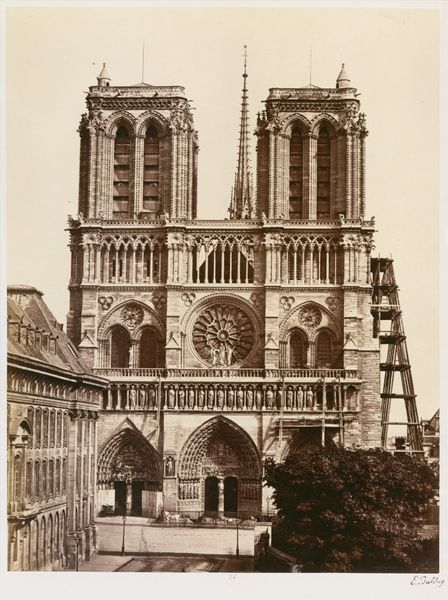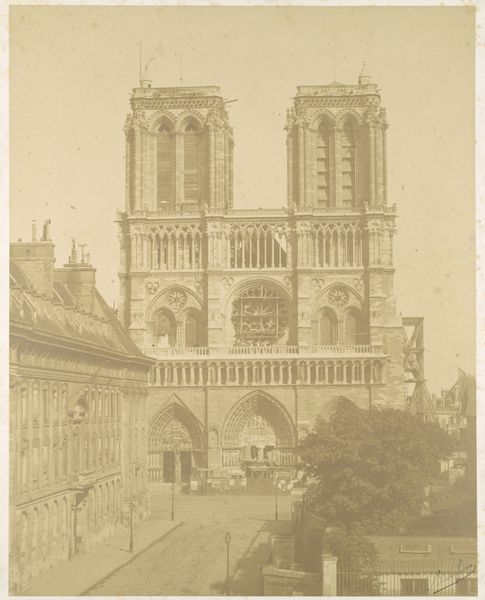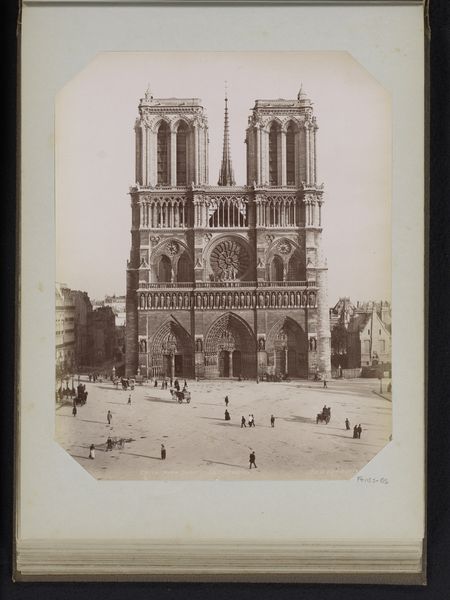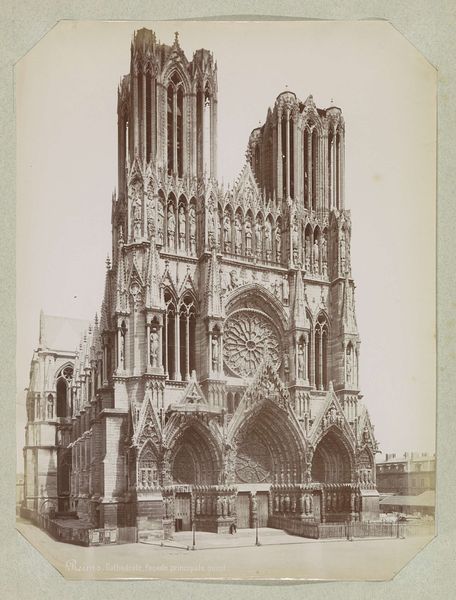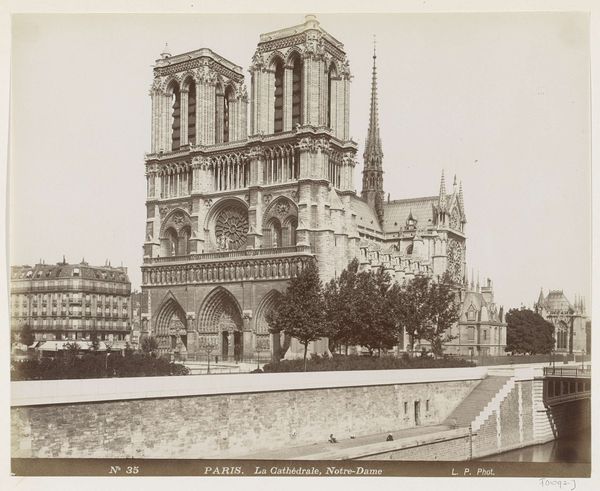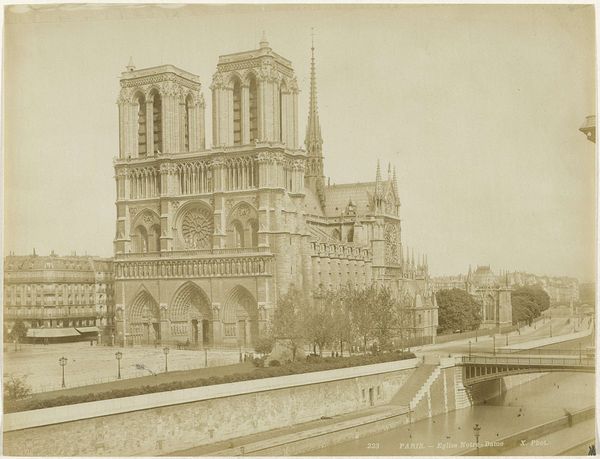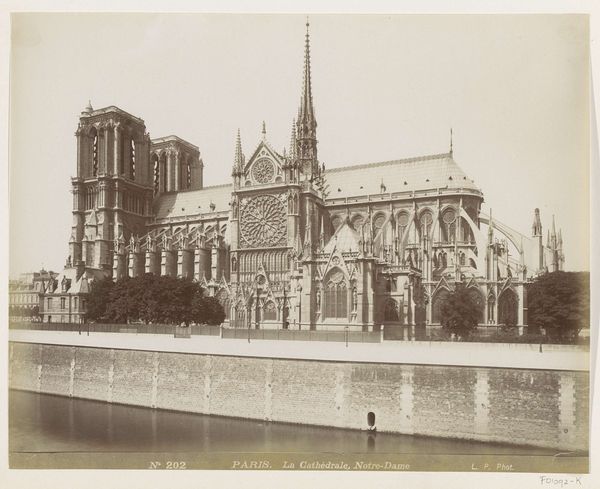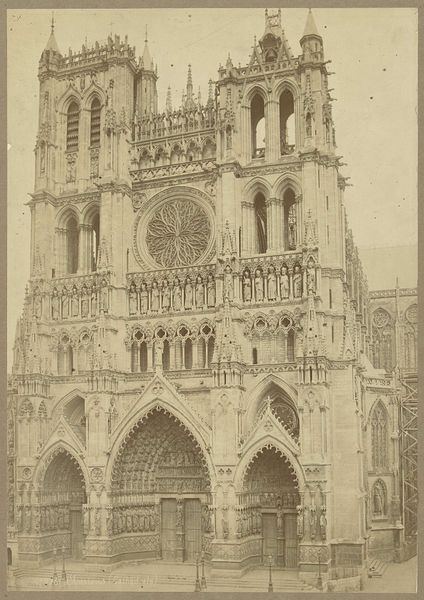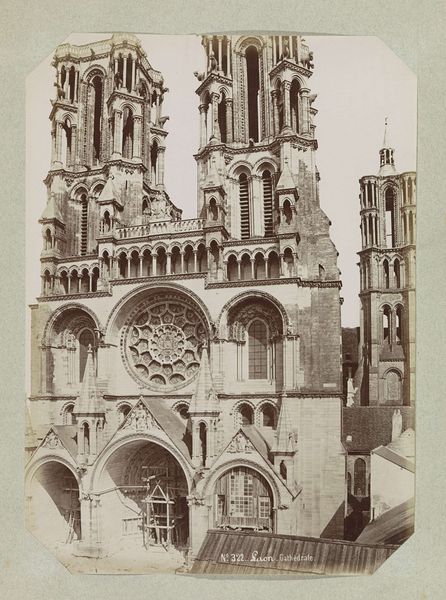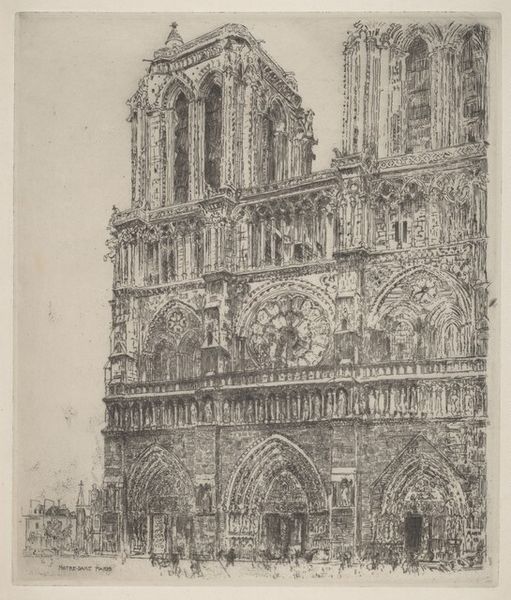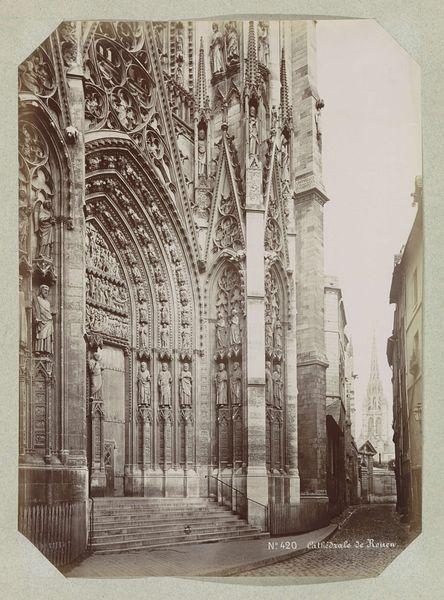
photography, gelatin-silver-print
#
photography
#
gelatin-silver-print
#
cityscape
#
realism
Dimensions: height 271 mm, width 211 mm
Copyright: Rijks Museum: Open Domain
Curator: What strikes me first about this gelatin silver print, attributed to Louis Antoine Pamard, circa 1880-1900, is its stark stillness. It feels almost…frozen, you know? Editor: Yes, frozen is apt. Before the fire, of course. The imposing facade of Notre Dame rises almost ghostlike from the print, the architectural details meticulously rendered in shades of sepia, yet there’s this undeniable melancholy about it. The bare plaza emphasizes its grandeur but also its isolation in that moment captured. Curator: The symbols are overflowing aren't they? I mean look at those twin towers! The sheer scale alone—the Western Facade as an icon of faith, or, perhaps, the ambition of faith... or, maybe something about reaching to heaven with stone. The rose window centered above the doors feels like a kind of divine all-seeing eye... Editor: Absolutely. Those soaring lines carry the aspirations of generations. But also note the deliberate, balanced composition. In essence, Pamard created not just a record of a place, but a mirror reflecting cultural values. Think about what photography was doing back then. There were notions that photographs stole your soul and perhaps this particular piece lends itself to such sentiment. Curator: Hmmm, maybe. Or, it’s an act of reverence. Pamard, gazing up with his bulky camera obscura in hand, and etching its likeness into a plate for an audience yet to be born. Did he realize he was immortalizing not just a building, but an era? This image embodies the intersection of the sacred and the secular. You’re capturing an intensely specific moment but there’s also something ancient, like capturing eternity itself in shades of gray. Editor: Yes, capturing. That might be the point in the long run. A capture turned cultural artifact. The cathedral in Paris is so much more than the sum of its parts now, a cultural repository, the location and star in literature from Victor Hugo to Hemingway, an architectural marvel for everyone. Photography certainly contributed to solidifying it so deeply in our collective consciousness. Curator: Well, it makes me want to stroll through Paris and look up! Maybe find my own perfect, personal angle on this enduring icon. Editor: And it makes me consider how architecture can hold communal trauma. Think of how profoundly we felt that loss after the fire, the power of physical structures and cultural memories.
Comments
No comments
Be the first to comment and join the conversation on the ultimate creative platform.
